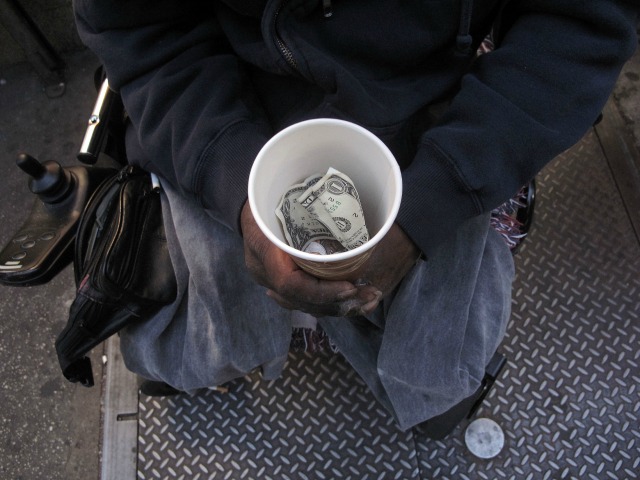Fifty years after President Johnson launched his “War on Poverty,” it is time to stop pretending and start doing something real for the poor.
Mitt Romney said during the 2012 presidential campaign: “I’m not concerned about the very poor. We have a safety net there. If it needs repair, I’ll fix it.”
Can there really be any doubt that it needs fixing?
Don’t expect the government to provide any reliable numbers. The biggest federal poverty program, the Earned Income Tax Credit (EITC), pays 27 million taxpayers $60 billion in cash. But like Section 8 housing vouchers and Medicaid, EITC payments are excluded when the government totals up who is poor and who is not.
It is obvious that the ranks of the poor swelled during and after the Crash of 2008. Average income fell during the Crash and has since fallen more. Paul Krugman is right to call it a “rich man’s recovery.”
Both the poor and the middle class are still in recession. Indeed, if unemployment figures were calculated using the same methodology used in the 1930s, public officials could no longer deny that we are in an ongoing depression.
But for believable numbers about who is poor and who is not, don’t look to the government.
The government is also confusing, it would seem intentionally confusing, about how much it spends in total on the poor. A Senate subcommittee struggled to estimate total spending on the poor and came up with a number of $61,194 per impoverished household per year.
Click here to read the rest of the article at AgainstCronyCapitalism.org
Hunter Lewis is co-founder of AgainstCronyCapitalism.org, co-founder and former CEO of Cambridge Associates, a global investment firm, and author of two recent books, Free Prices Now!, about the Federal Reserve, and Crony Capitalism in America 2008-12.

COMMENTS
Please let us know if you're having issues with commenting.